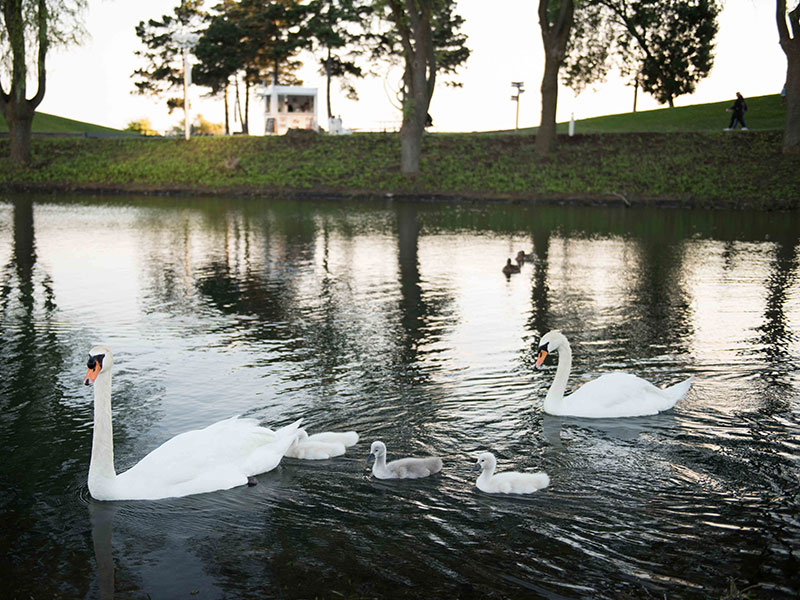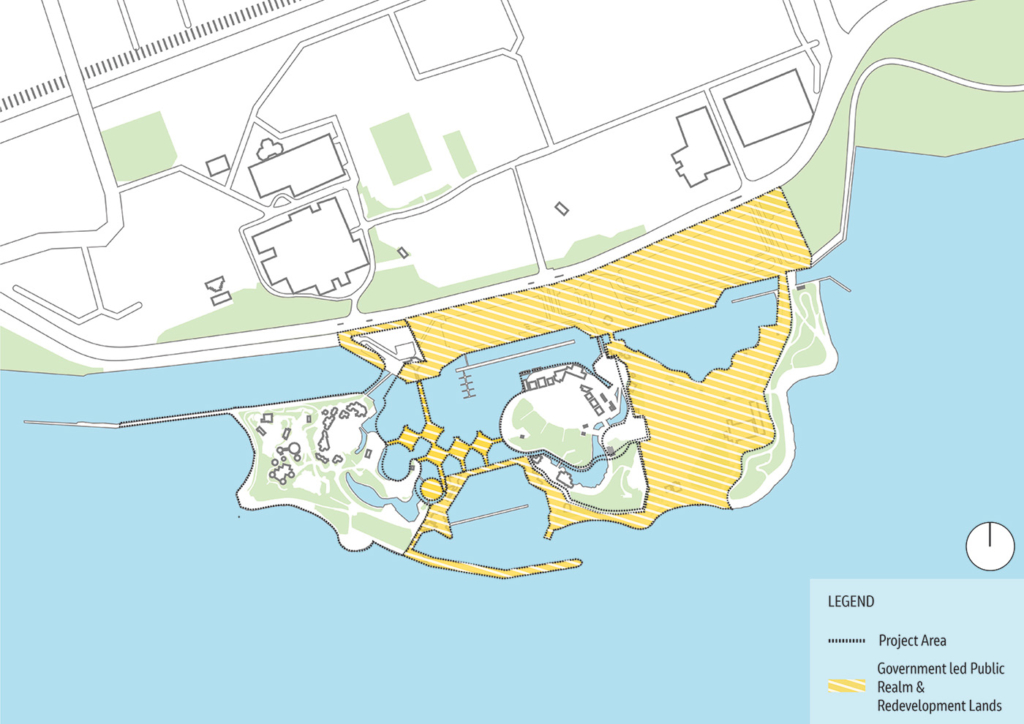What is an Environmental Assessment?
An Environmental Assessment (EA) is the provincial planning process for public infrastructure projects in Ontario. EAs are governed by the Ontario Environmental Assessment Act.
EAs provide a framework for assessing the impacts of a project on the natural, socio-economic and cultural environments. Decision making and project outcomes are influenced by feedback provided by the public, stakeholders and Indigenous communities.
What is a Class EA?
Class EAs set out a standardized and streamlined planning process for activities that are carried out routinely and have predictable environmental effects that can be readily managed.

What EA process applies to the Ontario Place redevelopment?
The Public Work Class EA is the Class EA that will be followed for the Ontario Place redevelopment project. It focuses on provincial government realty and infrastructure projects.
Who is the proponent?
The Ministry of Heritage, Sports, Tourism, and Culture Industries (MHSTCI).
What is the project area?
The Class EA project area is defined as the area where government-led activities will occur as shown on the map.
- Site preparations will take place across the entire Ontario Place site.
- Public realm design will address areas outside of the lands that will be tenanted such as open space, parks, trails, and landscaping. The design will also consider the transition between these areas and the publicly accessible lands being developed by the tenants.
What activities are included in the Class EA?
- Planning approvals and realty activities
- Building decommissioning and removal
- Grading and landscaping
- Design and development of parks, trails, and open spaces (public realm)
- Shoreline repairs and flood mitigation
- Site access and parking
- Construction of new buildings and supporting site infrastructure
Public Work Class EA project
Under the Public Work Class EA, there are different categories of undertakings, depending on the environmental impacts expected. The Ontario Place redevelopment project falls under the Category C process, which is the most rigorous assessment process under the Public Work Class EA.
The Category C Public Work Class EA process includes:
- Identifying the opportunity
- Identifying ‘Alternatives to’ the undertaking
- Describing the undertaking, study area and existing conditions
- Publishing project notices for major events such as: project commencement, consultation events, and project completion
- Hosting consultation events to seek input on design and design alternatives
- Identifying and evaluating ‘Alternative Methodologies’ (alternative design options)
- Completing Management Plans and Monitoring Programs for the selected alternative design option, as required
- Publishing an Environmental Study Report to document the process for public review
EA as a planning and design framework
By providing opportunities for public engagement and through the assessment of impacts to the natural, cultural and socio-economic environments, the Class EA process provides a framework for the planning and design of public infrastructure.
For the Ontario Place redevelopment project, this process will guide development of the public realm, including establishing the vision, exploring design options, and developing a recommended design.
The flowchart below depicts the EA tasks to be completed at each stage of the design development. Click on a row to learn more about the design phase or EA task.
Design phase 1:
Information gathering and design inspiration

EA tasks:
1. Identify the opportunity
2. Develop the consultation plan
3. Launch the EA
4. Describe the existing conditions
Design phase 2:
Design alternatives

EA tasks:
1. Identify the alternative methods of carrying out the undertaking (design options)
Design phase 3:
Evaluation and selection of preferred design

EA tasks:
1. Evaluate alternatives
2. Identify preferred alternative
Design phase 4:
Design development

EA tasks:
1. Identify impacts and develop mitigation and monitoring plans
2.Develop the Environmental Study Report (ESR)
3. Release the ESR for public review
4. Refine the ESR as required
Design phase 5:
Detailed design

EA tasks:
1. Project implementation
Study milestones
Indigenous consultation and engagement will continue through the EA process
Information sharing
Fall 2022 online information sessions
Environmental Assessment
and public realm design
Consultation event #1
We are here!
EA launch & public realm visioning
Consultation event #2
Fall 2022
Conceptual design options
Consultation event #3
Spring 2023
Evaluation process and recommended design
Consultation event #4
Fall 2023
Feedback and confirmation of preferred design
ESR completion and release
Late 2023
Construction
How to get engaged?
There will be many opportunities for you to get involved.
Your input will be used to inform the work being undertaken, including helping to shape the design of the public realm.
What can you do today?
- Please provide any new or different information about existing site conditions and key features at Ontario Place by filling in the comment forms at the end of Stations 3, 4, and 5 (Site Conditions).
- We are looking for insight into the future of the public realm. Please share your memories at Ontario Place and your vision for the public realm at the end of Station 6: The future of the public realm.
- Please provide any other comments in the general comment form provided in Station 8: Next steps.
What to expect in the future?
Public events are planned for key milestones throughout the project. Please visit the Updates section of the project website regularly for details.

